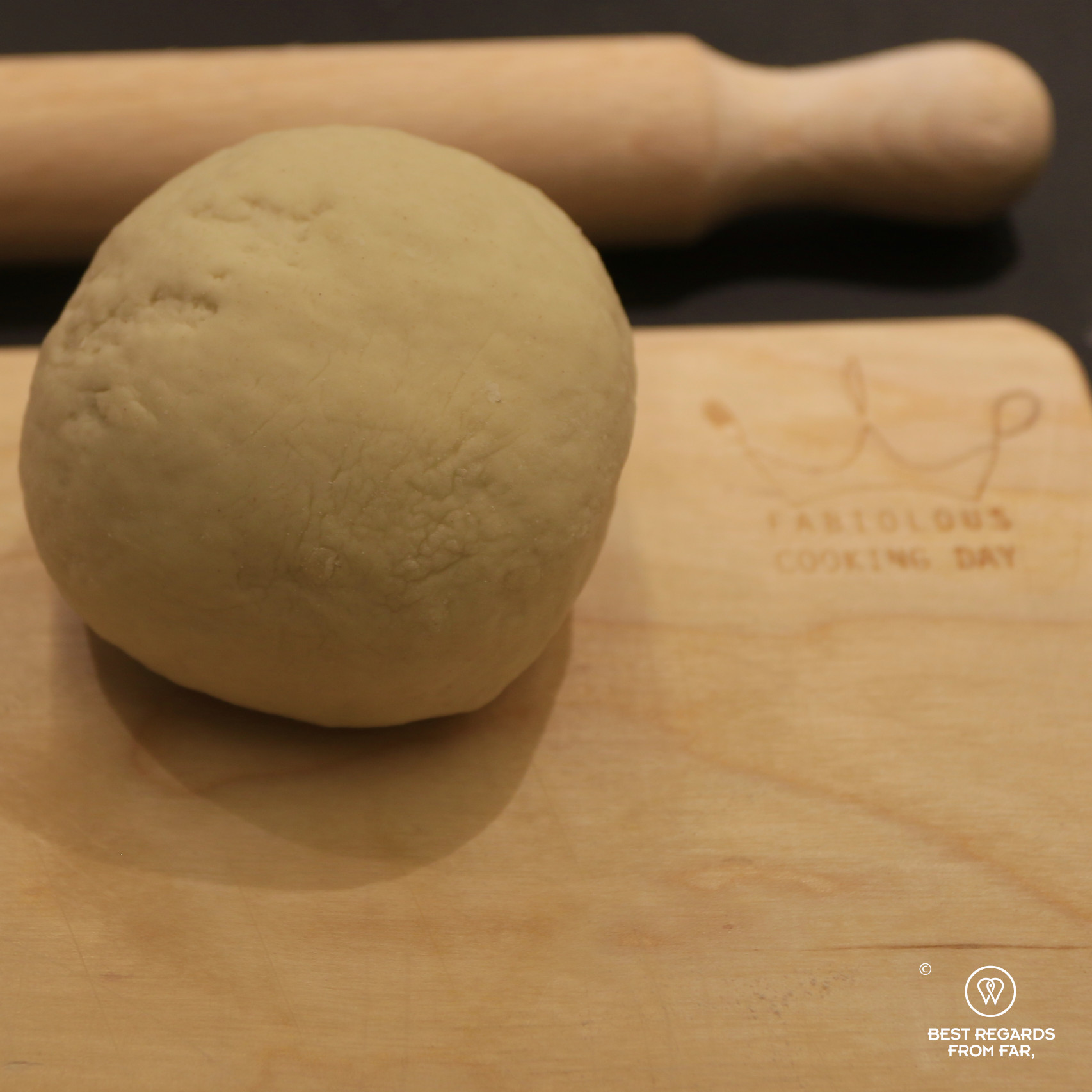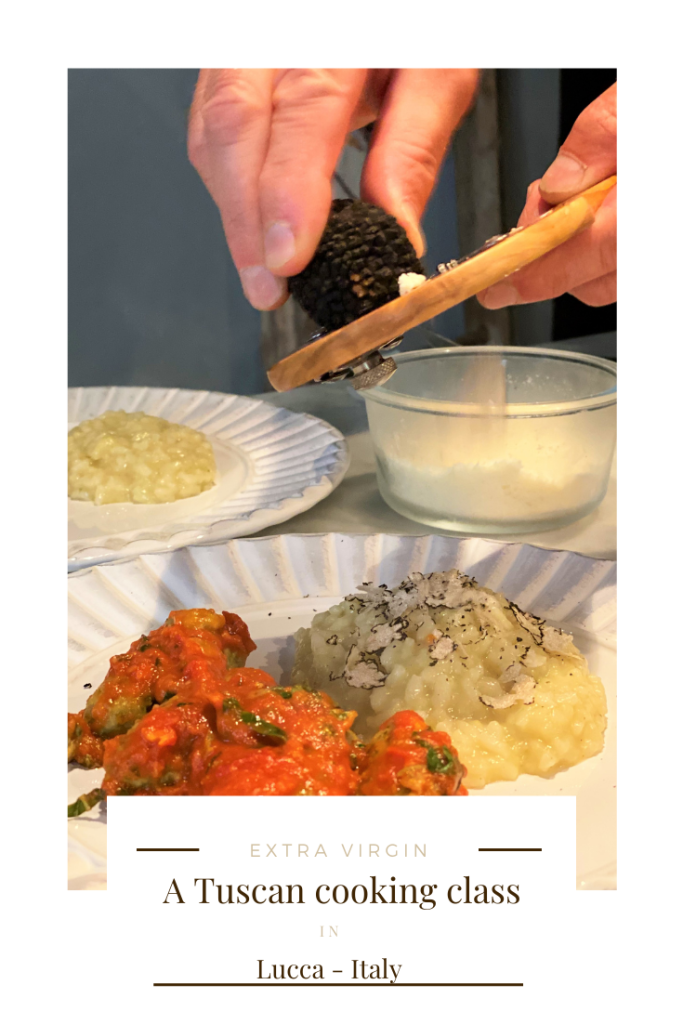Text: Marcella van Alphen
Photographs: Claire Lessiau
Are you expecting pizzeria recommendations? It gets even better than this!
If Italian gastronomy goes way beyond pizzas, they remain a must-taste during any trip to Italy, and they are for sure better than any back home, wherever home is. For the best pizza in Rome, do not look too far: join a pizza making class! Not only will it be the best and most fun pizza ever with your own specific generous toppings, but it is also a wonderful way to bring back home a bit of Italy to share with your loved ones any time you wish.
Pin it for later!
So thick or thin crust?
Let’s first get one thing right for once and for all. The people of Rome traditionally bake their pizzas with a very thin and crispy crust. The Neapolitan pizzas are the ones with the chewier thick crust. The big differences? The magic olive oil of the Roman pizza that allows the dough to be stretched thinner, and the baking temperatures that are greater for the thicker Neapolitan (750 to 1000°F (400 to 535°C) vs. 500 to 600°F (260 to 315°C)). This also means that if you do not have a professional oven, it is easier to bake a Roman pizza at home.

“As we are in Rome, we are going to make a delicious Roman pizza with a thin crust, just the way a pizza is supposed to be!” the Roman-born Chef Monica Farcas who has worked along Fabio Bongianni founder of Fabiolous Cooking Day and star Italian chef for almost 10 years announces slightly chauvinistically in a perfect English with a charming Italian accent and a warm smile.
The perfect dough for a Roman pizza
“Let’s start with the ingredients for the perfect dough”, Monica states.


On my wooden board, the following ingredients are neatly laid out:
- 100 grams of 00 flour (regular common all-purpose flour),
- 50 grams of water to respect the 2-to-1 weight ratio,
- 1 gram of fresh yeast,
- half a teaspoon of salt,
- 2 teaspoons of olive oil.
As I look at the brown lump of fresh yeast puzzled, Monica adds: “Good luck trying to make a good pizza without fresh yeast!” She directs us to mix all the ingredients together, but the flour. We stir quickly for a few seconds and the fresh yeast dissolves fast in the liquid.
“Perfect! Now pour the flour on the board and form a well to pour the liquid mix in”, Monica instructs us. “Bring in the flour towards the centre with a fork bit by bit and stir to shape the dough. When it gets thick, bring it all together and start kneading by folding and pressing it.” The dough becomes elastic and easily takes shape. In a few minutes, it is ready to put in the fridge, wrapped up in plastic foil or covered in a bowl.




“The dough has to rise at least 6 to 8 hours before we continue. It gets even better after 24 hours and it can be kept in the fridge for a maximum of three days. If you want to freeze it, do it only after the dough has risen, and then flatten it a bit before,” Monica explains as she provides us with bigger balls of dough made previously. “I made some yesterday so these are perfectly risen”, she details.
She throws a handful of flour to lay our doughs on which she sprinkles some more. “The dough feels a bit sticky and moist so the flour is essential to flatten: first, you press on it with your fingertips without tearing the dough, then you’ll use the rolling pin”, she instructs us now almost pizza chefs-to-be. Obtaining a uniform thickness is key to guaranteeing an even cooking. As Monica showed us, I start rolling my dough from the inside towards the outside to a decent pizza size of a circular shape, ready for the next step.
The Roman pizza sauce, no cooking needed!
“Let’s add some colours and start with the sauce”, Monica exclaims. We need:
- a can of whole tomato blended in a sauce,
- a bit of olive oil,
- half a teaspoon of salt,
- some oregano,
- a few leaves of fresh basil.
“You can add garlic, onions, pepper, herbs or whatever you like if you want to personalize it”, Monica explains, “but for the most traditional sauce this list of ingredients blended together uncooked are all you need.”
As instructed, I spread 3 to 4 tablespoons of the sauce on my pizza dough, keeping about a centimetre (half an inch) clear of sauce along the periphery. “The lack of sauce around the ridge prevents the toppings from melting into your oven. You’ll thank me for this the day you have to clean it!” Monica exclaims.
Topping it all off
Monica lays several bowls full of diced mozzarella, fresh basil leaves, olives, ham, and grilled peppers, zucchini and eggplants on the table. “The key to a delicious pizza with the perfect moist balance lies in the amount of cheese applied on top of the sauce. Too little will leave the pizza dry, too much will make it soggy,” our pizza chef explains. “It’s important to cover all the tomato sauce with one layer of cheese, then add the fresh basil leaves so that they are protected from burning by the other toppings”, Monica advises. “Or add them after your pizza has been baked in the oven”, she adds. After a good layer of cheese, I try to artistically decorate my pizza with a bit of each of the ingredients.



Cooking time!
Pretty proud of my lovely patchwork, I take my wooden board towards the professional pizza oven. Monica helps me transfer it onto the shovel and I delicately position my pizza onto the rotating hot stone which has reached 350 degrees Celsius (660°F). It does not take long. In about 3 to 4 minutes, the pizza seems ready. The mozzarella bubbles and the flavourful smells prompt us to take it out, smoking hot.


The result…
Monica slices the pizzas fast, lays them on the dining table where she pours us all a simple red Tuscan wine, yet perfect for the occasion. Not half-satisfied after baking these beautiful looking pizzas, we are all impatient to taste them. The dough is thin and uniformly cooked, the layer of cheese, the most generous and the flavours of the grilled vegetables and cured ham are delightful. The verdict is obvious: heavenly satisfying!

Travel tips:
- There are many pizza classes in Rome, and to make sure you enjoy a great personal experience with professional, local and passionate chefs, reach out directly to Fabioulous Cooking Day. Fabio and his team also offer cooking classes and food tours.
- The best way to get around in Rome is by Vespa.
- Check out this interactive map for the specific details to help you plan your trip and more articles and photos (zoom out) about the area (short tutorial)!
For more inspiring cooking classes, click on these images:






